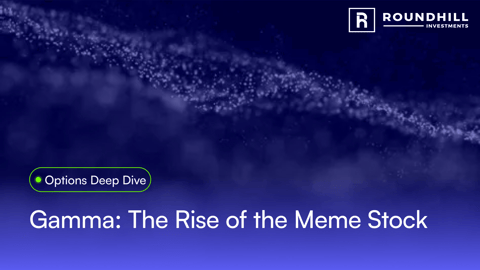XDIV: An Optimized Long-Term Investment Solution
Introduction
Most investors seek long-term capital appreciation via ETFs that passively track U.S. indices, like the S&P 500. Traditional S&P 500 ETFs are wonderful. They offer transparency, diversification, and tax efficiency, all in a single low-cost wrapper.
However, existing S&P 500 ETFs make regular distribution payments to investors.
But Shouldn’t I Want Dividends?
For most taxable investors seeking long-term capital appreciation, receiving distributions payments can be an impediment to two primary objectives: passive management, and tax optimization.
Passive management: Since 1960, 85% of the S&P 500’s cumulative total return has come from reinvested dividends. Investors need to actively plan to reinvest dividends to take advantage of the power of compounding.
Tax optimization: Most S&P 500 ETFs have paid distributions of approximately 2% annually over the last 20 years, and the tax rate on qualified S&P 500 dividends has been approximately between 15-25% since 2013. Non-qualified dividends may be taxed at an even higher rate. Investors need to account for tax payments and actively set aside cash.
Enter XDIV: A Total Return Solution
As the first of its kind, the Roundhill S&P 500 No Dividend Target ETF (XDIV) seeks to provide total return exposure to the S&P 500 by targeting zero distribution payments.
What Accounts Can Benefit from XDIV?
XDIV is most suitable for taxable accounts. That could include brokerage accounts (individual, joint, or business), custodial accounts, trust accounts, or even margin accounts. If you own ETFs in any one of these accounts, you are subject to taxes on the dividends you receive within that account.
This impact may be ever greater for foreign investors subject to withholding taxes.
Conclusion
For decades, investors have turned to the S&P 500 for broad exposure to America’s largest companies. While the index is widely seen as a cornerstone of long-term investing, not every investor wants the dividends that come with it.
This is why we launched the Roundhill S&P 500 No Dividend Target ETF (XDIV). XDIV is intentionally designed to give you the total return of the S&P 500 while aiming to minimize taxable income and the management of reinvesting dividends. For many, it’s a smarter, cleaner way to stay invested in the market.
Disclosures
There is no guarantee that the Fund will be able to successfully avoid paying dividends and distributions. Additionally, there can be no guarantee that the Fund will be successful in its strategy to provide shareholders with a total return that matches that of the S&P 500® Index.
Investors should consider the investment objectives, risk, charges and expenses carefully before investing. For a prospectus or summary prospectus with this and other information please call 1-855-561-5728 or visit the website at https:// www.roundhillinvestments.com/etf/XDIV. Read the prospectus or summary prospectus carefully before investing.
Investment Strategy Risk. There is no guarantee that the Fund will be able to successfully avoid paying dividends and distributions. Additionally, there can be no guarantee that the Fund will be successful in its strategy to provide shareholders with a total return that matches that of the S&P 500® Index. In order to effectuate the Fund’s strategy, the Adviser is relying upon the ability to conduct in-kind redemptions of the Fund’s S&P 500 ETF holdings. In the event that the Adviser is unable to do so due to factors such as broker-dealer balance sheet availability constraints, market volatility, regulatory changes, contrary IRS positions relating to an ETF’s use of in-kind creations or redemptions, or operational issues, the ability of the Adviser to avoid the taxable income generated by an investment in Fund Shares may be impaired and may force the Fund to make a dividend or distribution payment.
S&P 500 ETFs Risk. The Fund will have significant exposure to the S&P 500® Index through its investments in the S&P 500 ETFs. Accordingly, the Fund will subject to the risks of the S&P 500 ETFs, set forth below. In addition to these risks, each S&P 500 ETF is also subject to the following risks to which the Fund is also subject, which are described within the section entitled “Principal Risks”: Active Market Risk, Asset Class Risk, Concentration Risk, Cybersecurity Risk, Operational Risk and Structural ETF Risk.
Active Management Risk. The Fund is actively-managed and its performance reflects investment decisions that the Adviser and/or Sub-Adviser makes for the Fund. Such judgments about the Fund’s investments may prove to be incorrect.
Active Market Risk. Although Fund Shares are listed for trading on the Exchange, there can be no assurance that an active trading market for Fund Shares will develop or be maintained.
New Fund Risk. The Fund is a recently organized investment company with a limited operating history. As a result, prospective investors have a limited track record or history on which to base their investment decision.
Roundhill Financial Inc. serves as the investment advisor. The Funds are distributed by Foreside Fund Services, LLC which is not affiliated with Roundhill Financial Inc., U.S. Bank, or any of their affiliates.
Glossary
S&P 500 Index (S&P 500®): The S&P 500 Index is a measure of large-cap U.S. stock market performance. It is a float-adjusted, market capitalization-weighted index of 500 U.S. operating companies and real estate investment trusts selected through a process that factors in criteria such as liquidity, price, market capitalization, financial viability and public float. It is rebalanced quarterly in March, June, September and December.

.png?width=80&height=80&name=RH_Symbol-PrimaryBllue%20(2).png)


